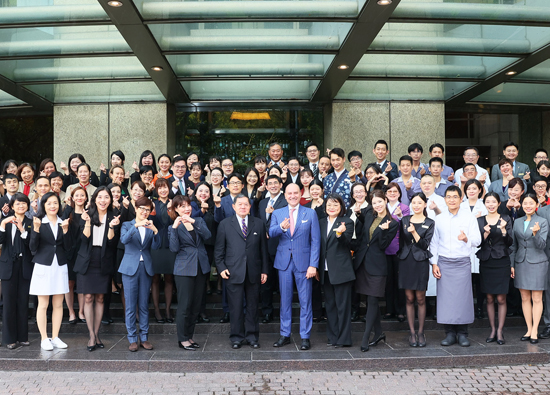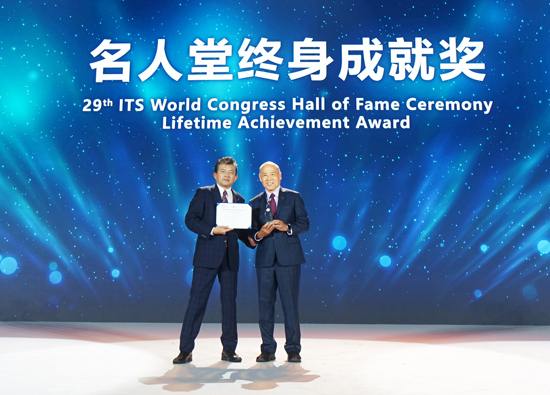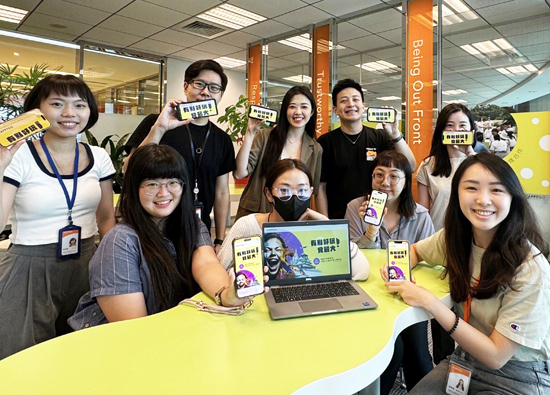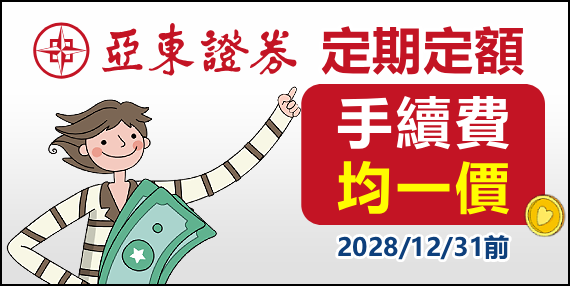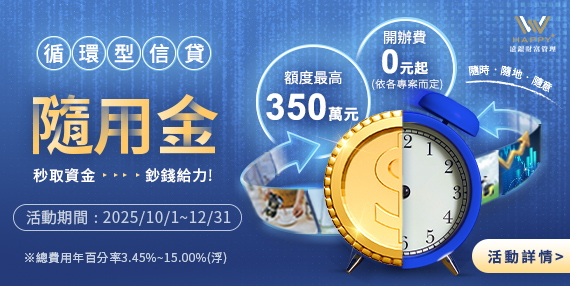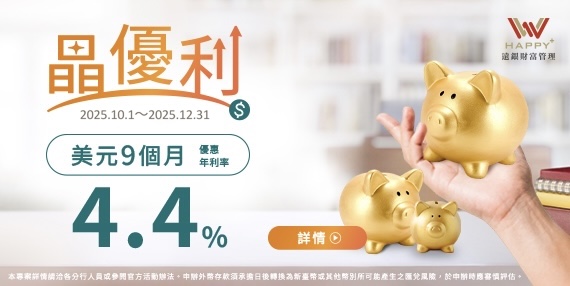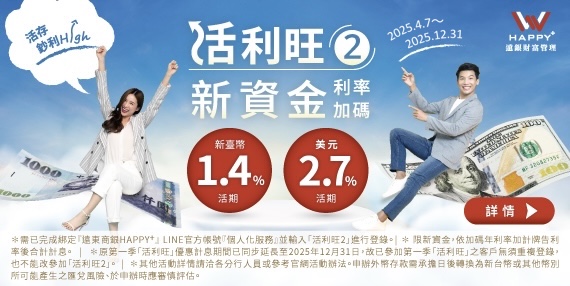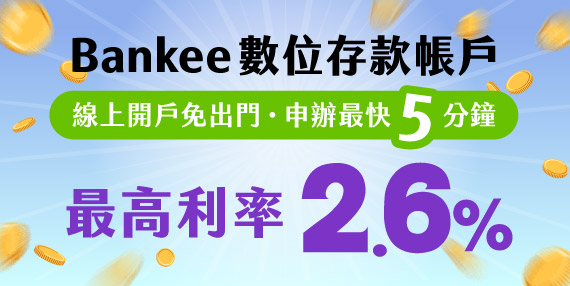12.2023 Leader's Remarks
Resilient Retailing: New Guidance for the Retailers
FEG Corporate Staff Office / Morris Yang

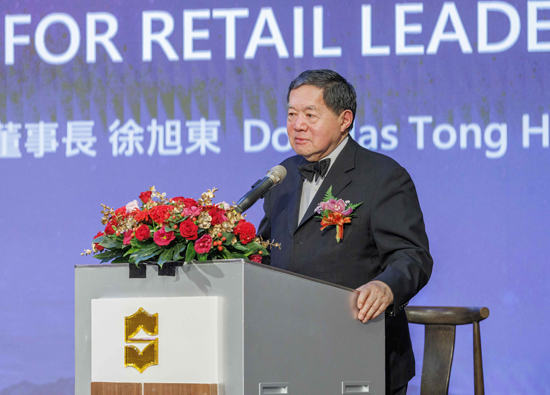
In 2023, the retail industry has been gradually rebounded, not only e-commerce grew immensely during the pandemic period, but physical stores also welcomed unforeseen thriving prospect post-pandemic era. However, how long will this prosperity last? How should we respond to uncertainties amid the current environment? This article will start with overall macro prospect, and further discuss retail industry’s corresponding strategies in the turbulent environment.
Operating Environment Prospect
.jpg)
Among the world’s major economies, thanks to strong support of consumption expenditures from the job market, added with expanding investments of the enterprises, U. S. GDP grew 2.4% in the second quarter of 2023, up from 2.0%. While Core CPI and PPI dropped slightly. The 2023 2Q GDP in Euro Zone grew 0.3%, remained sluggish due to stringent currency policy suppressing economic momentum. Also, with global weak demand leading to lower industrial production, continuous downward retail sales, conservative consumption sentiment, and the annual growth of Producer Price Index also dropped slowly due to investments in energy etc.
In 2Q 2023, with booming automobile exports, Japan’s quarterly GDP growth rose significantly from the 1st quarter to report growth for three consecutive quarters. Yet, from the second half year, sluggish external demand might affect performance. Furthermore, starting from this year, annual PPI growth has been decline per month, reflecting downward commodity prices of energy, food, steel, etc. Annual growth of CPI remained the same.
While China continues to slow down across several economic indexes, export, consumption, and unemployment rate are under expectation, coupled with real estate developer crisis, triggering fear of economic and financial risks. Annual growth rate of PPI has already reported negative growth for ten consecutive months; annual growth of CPI also turned negative, demonstrating slowing internal demand, enhancing deflation concerns.
Taiwan’s economic growth in 2023 is forecasted at 1.6%, showing externally sluggish and internally mild trend. Private consumption shall sustain for the most part of this year’s economic growth. However, we should look for the following three risks:
Geopolitics
Russia-Ukraine War has been dragging on, the increasing conflict between Russia and NATO may lead to long-term confrontation and hinder economic developments.
Russia withdrew from Black Sea Grain Initiative, and deepened uncertainty of global food supply. Moreover, if Russia suspends its natural gas to Europe, it will cause disruptions to the global energy market.
Interest Rate Trend
Global core inflation remains high, central banks in Europe and the U. S. may keep high interest rates longer, which will affect investments and cut down household’s purchasing power and inhibit the world’s end demand.
Due to strength in U. S. dollars, emerging economies suffer from sharp depreciation of currencies. The issuance of U. S. bonds may increase sovereign debt default risk.
Economic Prospects of Mainland China
Sluggish consumption, weak investments, increasing unemployment rate, and slower economic momentum in mainland China will impact global economic growth.
Large-scale real estate enterprises’ debt default and asset management groups’ financial problems have brought concerns over China’s economic and financial risks.
In general, due to inflation, rising interest rates, and financial market turmoil in 2023, economic growths of major nations and regions are sluggish as compared to that of 2022. Looking into 2024, most nations are expected to go upward, the emerging and developing countries.
Revitalization of the Retail Industry
Looking at developments of the retail industry in the past 5 years, customers, suppliers, employees, and investors, behaviors and expectations of each stakeholder are quite different from the past. Consumers no longer visit the website to search for merchandise, also give up on their favorite brands, instead looking for affordable and good quality products of alternative brands, whilst demand speedy delivery, and attitude toward ESG and strategies.
Since 2015, top 10% ranking listed retailers have accounted for 70% of the industry’s total profits. Even though it is a “Winner Takes All” business, it is not easy to become a winner, not to mention to maintain the leading position. When the game plan encounters drastic change, retailer’s survival faces with major upheavals.
What are the changes in the retail industry during the past five years?
Rise of Zero Consumers
Zero boundaries: Nearly half of the consumers express that they rely on social media, celebrities, articles, or blogs to gain purchasing inspiration, and thus smoothly engage in cross channel shopping.
Zero in the middle: In the past five years, the consumers spending on mid-level price commodities and services has dropped nearly 10%. In April 2023, about 80% of U. S. consumers express that they are buying less costly products. Meanwhile, according to recent survey on U. S. and European consumers, 40% of people plan to indulge in high-end spending in restaurants, travels, and clothing.
Zero loyalty: 50% of consumers express that they changed their favorite brands in 2022, a big increase as compared to only 30% in 2020.
Zero patience: Consumers are no longer willing to wait, “free standard delivery services” used to be provided by only a few retailers, now have quickly become basic services. Many consumers express that three-day delivery time is the slowest speed that they can tolerate.
Net zero as a buying factor: McKinsey and NielsenIQ analysis indicate that products with sustainability-related statements displaying on the packaging have grown an average of 28% in the past five years.
Re-structure Retail Ecosystem
The retail industry used to purchase products through website of suppliers, and then resale to gain profits. Now they begin to use “new value pool” aside from omni-channel retailing, such as the third-party market and Retail Media Network. In the past five years alone, more than 20 major retailers launched their third-party markets to try new marketing, categories, or products, then proceed with first-party sale, or totally replace first-party sale. Furthermore, according to forecast of eMarketer’s latest report, 2023 retail media advertisement expenses are expected to exceed USD 50 billion. Among which, Amazon is undoubted the leader of the retail media advertisements; Walmart also added its own customers data base through “Walmart Connect” to actively develop advertisement business; Carrefour committed to promoting “Carrefour Links” connecting customer database and accumulated transactions for many years to promote media advertisement business.
Job Content and Employee Demand Are Changing
McKinsey’s survey indicated that the front-line employees of the retail industry hope the company can provide job content with flexibility and freedom. The survey report also discovered that staff retaining rate is proportional to profit growth. Because of decreased employee loss, the saving fund can be used to increase salary, benefit, and training. Furthermore, every team needs employees with data analytical skills to respond to challenges of digitalized operations.
Impeding Priority for Top Management of Retail Industry
Considerations for management includes seek and measure consumers’ “share of life,” not “share of pocket.” It means retailers must introduce more diversified merchandise or services, to become an indispensable part of people’s life, which will help brick stores gain more share of life from the consumers and establish more solid relations with them. Brick stores are not only the merchandise display and service center, but also the center of speedy fulfillment. Furthermore, to win more share of life, retailers need to evaluate business strategy through the perspective of ESG.
.jpg)
Conclusions
Earlier this year, Coca Cola sponsored “Create Real Magic” contest, invited people to use GPT-4, Dall-E2 systems, and recreate via AI Coca Cola’s iconic visual design. Meanwhile, to continue the spirit of new brand concept “Real Magic,” Coca Cola also released an innovative commercial titled《Masterpiece》, which was very popular. The script described that in a virtual art museum, how classic art pieces collaborate and pass “the water of inspiration” i.e. a bottle of icy cold Coca Cola to a tiresome student. 《Masterpiece》does not describe the story of Cola, but “Cola is itself the story” It connects different eras, geographic locations, categories of art pieces, finally brings energy for the main character. The hidden meaning is the true brand spirit “Real Magic” – people create innumerable extradordinary moments because of interflows.
People often say: The only constant in this world is change. Therefore, would like to quote and share with you Winston Churchill’s remarks: “To make improvement you have to change; to be perfect, never stop changing.” (Speech made by Chairman Douglas Tong Hsu on the 2023 Far Eastern Department Stores Vendors’ Party)
#


